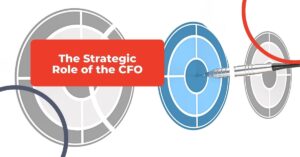The 4 Ps of Transition Management: Embracing and Implementing Change
Apr 22, 2022
Change management for a company is situational. Something is transforming, and there must be operational events and impacts for change to succeed efficiently. In this article, we’re discussing the other side of the coin – the psychological phenomena of Transition management. With Change management, there are specific people, roles or positions involved. To embrace and implement Transition, your team and employees must understand and benefit from communications on the 4 Ps: Purpose, Picture, Plan and Part.
Change Needs Managing
Change is the only constant in business. It is inevitable, and it is necessary for businesses to evolve and grow. However, change can be challenging to manage. In order to succeed at change management, you need to understand the different challenges that come with it. This can include:
- Lack of communication with employees
- Lack of understanding from stakeholders
- Inability to meet deadlines
- Unclear deadline expectations
- Confusion around new processes
- Lack of resources
Adjusting to Change
The first task of change management is to understand the desired outcome & how to get there. In the how are a number of operational functions, not the least of which is understanding who the key players will be in the initiative. In fact, you may notice that most of the challenges listed above are people problems. A company’s ability to change and remain vital depends on its ability to transition the behavior of people.
We’ve shared a framework to simplify this people process, helping to identify key stakeholders and their roles. This is fulfilled with the CAST model:
C = Champions: Individuals who believe & are committed to the change
A = Agents: Those tasked with tactical implementation & winning the hearts of the organization
S = Sponsors: Those with the authority & ownership to commit the needed resources to complete the plan
T = Targets: Those whose behavior, expectations, perceptions, & work processes need to change
Remember – People can be in more than one role!
The challenges of change management are not only limited to the employees but also extend to customers, suppliers and other stakeholders who may be impacted by any changes made by the company. A crucial ingredient to successful change management is a successful transition through the change.
Understanding Transition Management
Transition management is a process of getting the best out of change, managing a transition from one state to another. It includes defining the transition, managing the transition, and sustaining the change. It can be seen as a set of activities that are undertaken to ensure a smooth and successful transition.
Transition management is not just about the change, it is also about the people involved in the change. The people who are affected by the change need to be included in all phases of transition management in order for them to feel comfortable with their new environment and work towards a successful transition.
The first task of transition management is to convince people to come along. In fact, here’s a helpful formula as you consider transition:
Change + Human Beings = Transition
The Four Ps of Transition Management
Successful change requires buy-in from those impacted by the change – the Targets.
Transition success lies in the interaction between those leading the effort and those impacted by the effort.
To build buy-in, use the Four P’s to guide the development of the communication & implementation plan:
Purpose: Clarify and communicate (a lot)
Picture: How things will look post-transition
Plan: Outline the steps & schedule to be used to achieve the objective(s)
Part: Explain roles and deliverables to the CAST
Think “who” rather than “what”, and work to involve everyone in business improvement activities.
Let’s break each of these components down for further understanding.
Purpose
In order for any change in business to be successful, it is important to first clarify the need for change. If this doesn’t get done, then your team – the CAST – won’t know how best to implement the change and it will eventually fail.
It is important for the company to know what it wants to achieve and how it wants to get there. The company and its leaders need a clear vision for its future, which should align with the purpose of change. In fact, leaders should err on the side of overcommunicating the purpose. Employees don’t just want to know what’s going on. Ideally, they want to have confidence and even enthusiasm that what’s going on is great for the company and great for them.
This is also a critical time for developing a common vocabulary about and amidst the change. In conveying purpose, leaders are preparing the organization to let go of the past and embrace the future path that we’re looking to install.
Picture
With this behavior, we’re helping the organization to see success. What will things be like after the transition? What’s the vision for the business post-implementation? And how will that change impact individuals in the organization moving forward, and what will be expected of the CAST to meet that impact?
Here it’s useful to understand the desired or impending change in context. Are you deploying a new technology system? Adopting a new process or system? These changes might involve limited stakeholders, have clearly defined milestones and the transition may be relatively brief. On the other hand, your company may be responding to changing legislation, forcing a new way of doing things. Market dynamics may require a significant change in core aspects of how business functions. Of course, acquiring or being acquired will often create the most dramatic change.
This brings us always back to purpose as the anchor in involving the human element, helping the organization understand realities.
Plan
The need for a plan in transition management is seemingly obvious. The plan outlines the steps and creates a list of milestones that must be communicated effectively and carried out through the organization. In his book Great By Choice, Jim Collins has a useful analogy of the 20-mile march. You can only achieve that march when you set and understand milestones and measure and monitor how you’re going against achieving those activities.
The concern in this stage isn’t necessarily that planning won’t get done – it’s that it’s often the first and only piece of transition management organizations focus on! Action items, tasks and to-dos are easy to understand. Leaders have to be careful not to overlook defining purpose and picture and jump directly to the plan. Your team may successfully carry out activities, but the transition will ultimately be far less effective if that’s all they do.
Part
Finally, we describe the “parts” each member of the “CAST” will play in the transition, explaining the roles and deliverables to the members of the CAST. Again, it’s important to clearly communicate and seek alignment. Done successfully, the change is embraced by the organization and change is adopted.
Results Rule Transition
It’s important to keep results top of mind throughout the transition, rather than a commanding focus on controlling deadlines or people. If the 4 Ps are thoroughly executed there should be little room for dysfunction, but unnecessary stress and conflict can come from too strong a focus on the mechanics of how instead of the effectiveness of what.
These two frameworks in combination solve much of the potential for disharmony in change management. A well-defined CAST, thoughtfully executing on the Four Ps under clear leadership is a strong and smart way to manage change.


